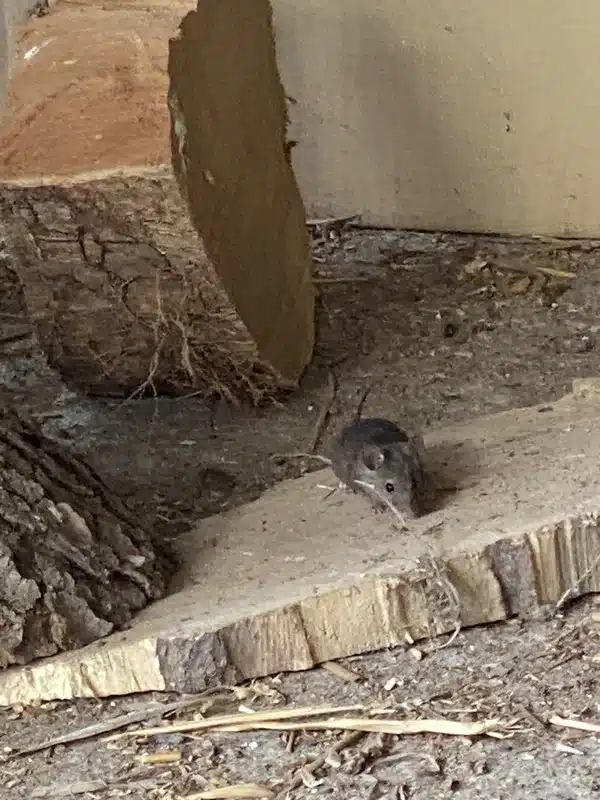Dealing with a rat problem in your home can feel overwhelming. These rodents carry diseases, contaminate food, and cause structural damage through their constant gnawing. While many homeowners want to explore repellent options before moving to more aggressive control methods, it’s important to understand what actually works and what doesn’t.
As a licensed pest control technician since 2015, I’ve seen countless homeowners try various rat repellent approaches with mixed results. In Old Town Alexandria and DC, where we handle numerous rodent calls, I’ve learned that repellents work best as part of a broader strategy rather than standalone solutions.
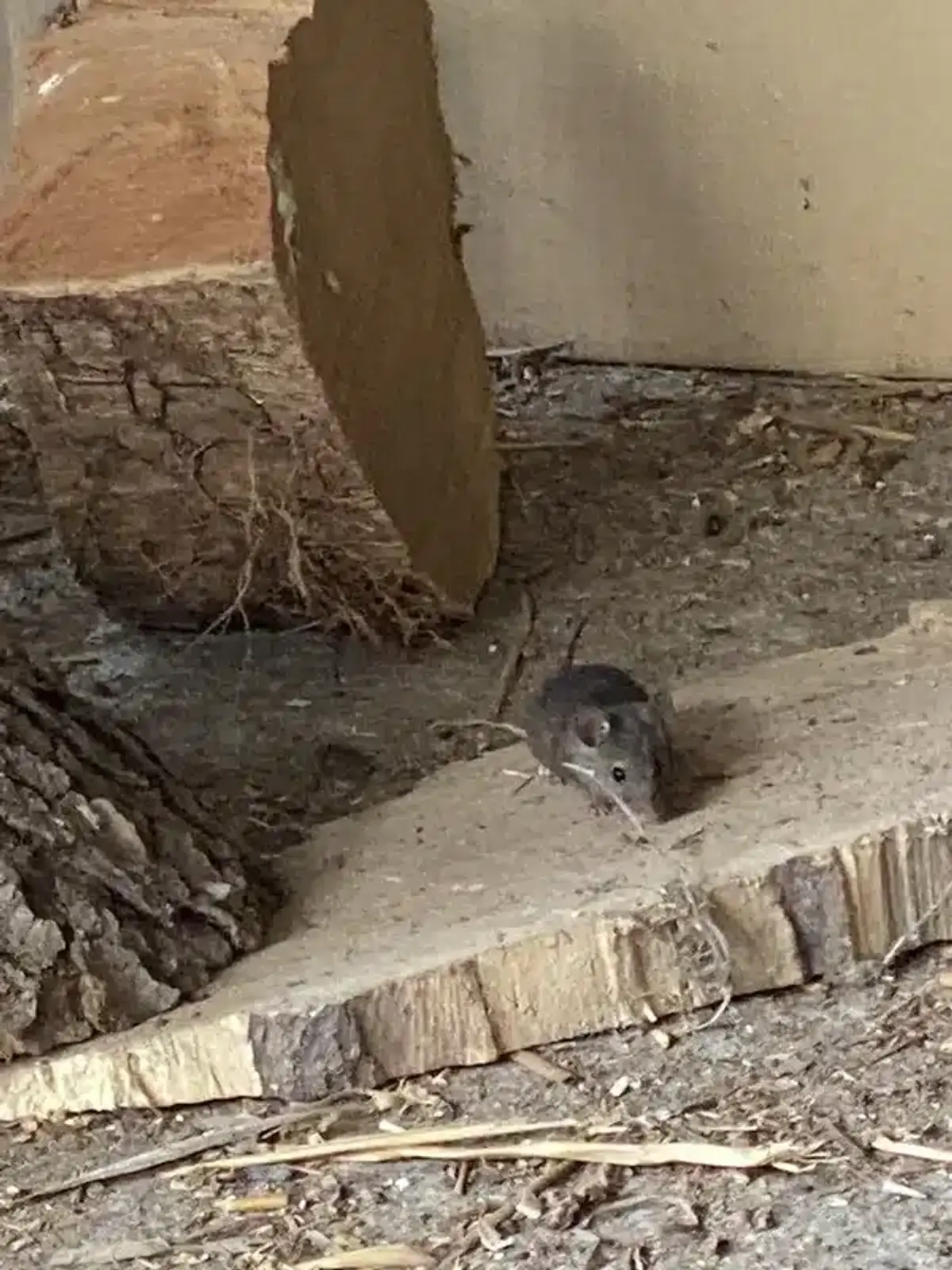
Understanding How Rat Repellent Works
Most repellents work by targeting a rat’s strong sense of smell or creating unpleasant sensations when they encounter treated areas. Since rats are known to have excellent olfactory abilities, many effective repellents focus on scents that rodents hate.
However, repellents have limitations. They typically provide temporary relief while you address the root causes of your infestation. Additionally, rats may become accustomed to certain odors over time, reducing effectiveness.
The key is understanding that no repellent alone will solve a serious rat infestation. Effective rodent control requires an integrated approach combining multiple strategies.
What does the science say?
The National Sustainable Agriculture Information Service emphasizes that successful rodent management follows Integrated Pest Management (IPM) principles. Their research shows that combining repellents with exclusion, sanitation, and population control methods provides 60-80% better long-term results than using any single approach alone. This multi-faceted strategy addresses both immediate deterrence and long-term population management.
Natural Rat Repellent Options
Essential Oil Repellents
Peppermint oil stands out as one of the most popular natural rat repellent choices. The strong scent overwhelms rodents’ sensitive noses, making treated areas less appealing. Other essential oils like eucalyptus, lemongrass, and citronella also show promise.
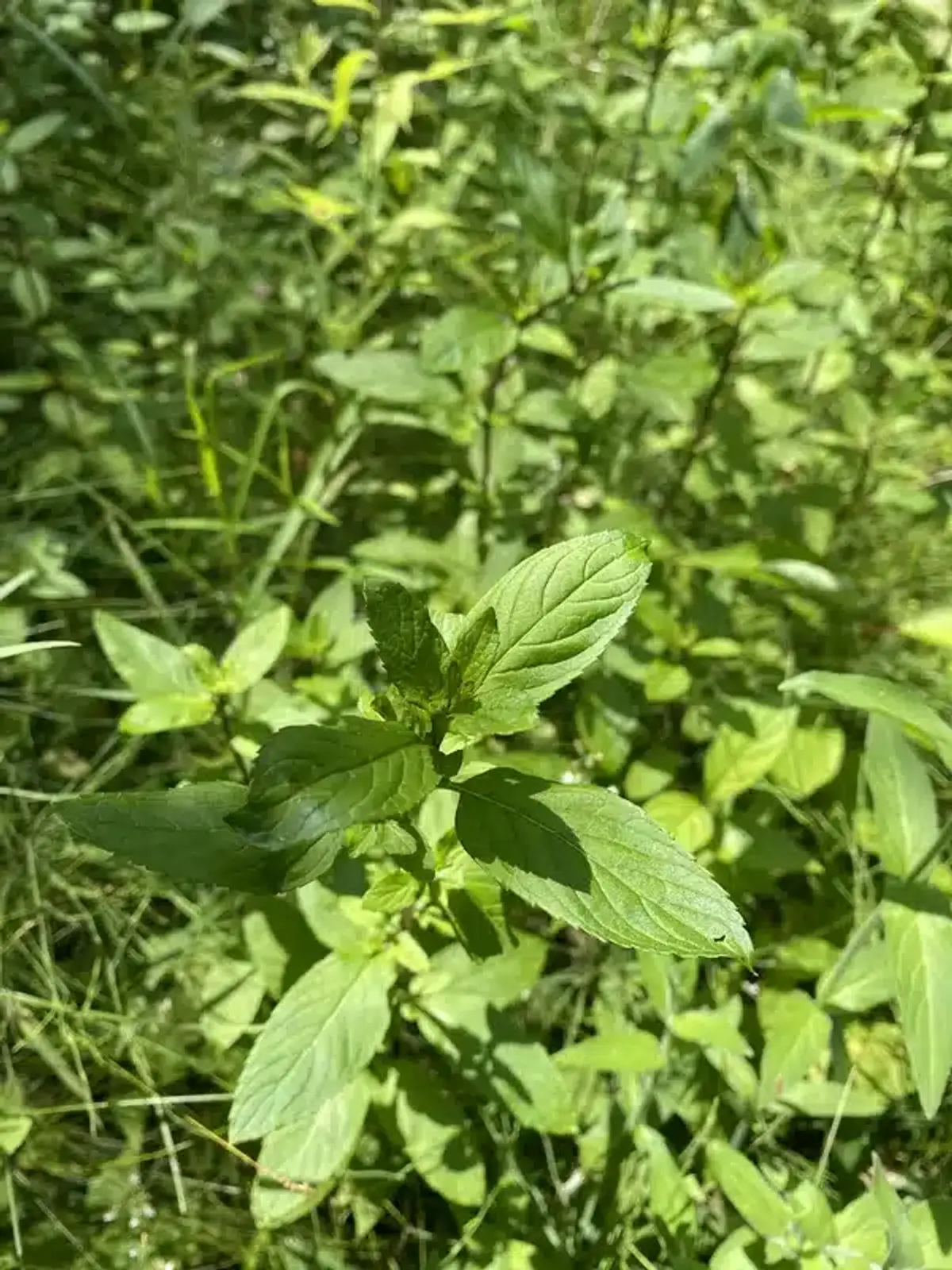
To use peppermint oil effectively, mix water in a spray bottle with 10-15 drops of oil. Spray around entry points, along baseboards, and in areas where rats might hide. You can also soak cotton balls in the oil and place them strategically around your home.
Keep in mind that natural repellents like essential oil lose potency quickly. You’ll need to reapply every few days, especially in high-humidity areas like basements.
Predator Urine Applications
Coyote and bobcat urine can trigger rats’ natural fear responses, making them avoid treated areas entirely.
What does the science say?
According to research published in Physiology & Behavior, predator urine creates genuine, measurable avoidance behaviors in laboratory rats. The study found that rats exposed to coyote and bobcat scents showed significant changes in their movement patterns and reduced time spent in treated areas, demonstrating that predator-based repellents work through actual biological fear responses rather than simple odor aversion.
Apply predator urine by saturating cotton balls and placing them in areas where rats are active. Replace the cotton balls every 7-10 days as the scent fades. This method works best for outdoor applications around the perimeter of your home.
Natural Plant-Based Rat Repellent Options
Certain plants naturally repel rodents through their strong scents. Mint varieties, marigolds, and garlic can help keep rats away from your vegetable garden and outdoor areas. Plant these around your home’s foundation or in areas where you’ve noticed rat activity.

Commercial Rodent Repellent Solutions
Ultrasonic Devices for Rat Control
Ultrasonic rodent repellers emit high-frequency sound waves that are inaudible to humans but supposedly uncomfortable for rats. These devices plug into wall outlets and claim to keep rats away through sonic deterrence.
However, field studies show mixed results for ultrasonic devices. While some show initial avoidance, rats often adapt to the sounds within 10-14 days.
What does the science say?
Field studies on ultrasonic pest devices reveal significant limitations in real-world applications. Research shows that while rats initially avoid areas with ultrasonic devices, habituation occurs rapidly - typically within 10-14 days. The study found that ultrasonic frequencies between 20-40 kHz showed the most promise, but effectiveness decreased dramatically after the habituation period, requiring device rotation or temporary shutdown to maintain any deterrent effect.
If you choose ultrasonic devices, maintain clear line of sight between the device and target areas. Furniture and walls block the sound waves, reducing effectiveness significantly.
Chemical Repellent Sprays
Commercial sprays containing capsaicin, piperine, or other irritants can deter rats from specific areas. These products work by creating unpleasant sensations when rats encounter treated surfaces.
Look for products that are designed for outdoor use if treating exterior areas. Many commercial repellents contain ingredients that are EPA-approved and considered minimum-risk pesticides under current regulations.
Granular Repellents
Granular products scatter around the perimeter of your home or in specific problem areas. These typically contain aromatic compounds that rats find objectionable, creating a barrier effect.
Apply granular repellents according to label directions, focusing on areas where rats could serve as entry points. Reapply after heavy rains or as recommended by the manufacturer.
Natural vs Commercial Repellent Comparison
| Natural Repellents | Commercial Products | |
|---|---|---|
| Cost | $5-15 per month | $20-50 per month |
| Reapplication | Every 3-5 days | Every 2-4 weeks |
| Safety | Pet & child friendly | Requires precautions |
| Best For | Prevention & light infestations | Moderate to heavy activity |
Mouse and Rat Repellent Application Methods
Identifying Target Areas
Before applying any mouse and rat repellent, identify where rats are actually active. Look for droppings, gnaw marks, and grease stains along walls. Focus your repellent efforts on these confirmed activity zones rather than treating randomly.
Pay special attention to entry points like gaps around pipes, cracks in foundations, and areas where different building materials meet. Rats could use these spots to access your home repeatedly.
Creating Effective Barriers
Apply repellents in continuous lines rather than random spots. This creates a scent barrier that helps keep them away more effectively. For liquid repellents, spray bottle and apply coverage should overlap slightly to avoid gaps.
When treating perimeter areas, extend the treatment 2-3 feet out from your home’s foundation. This wider barrier gives you better protection and accounts for rats’ tendency to investigate before approaching structures.
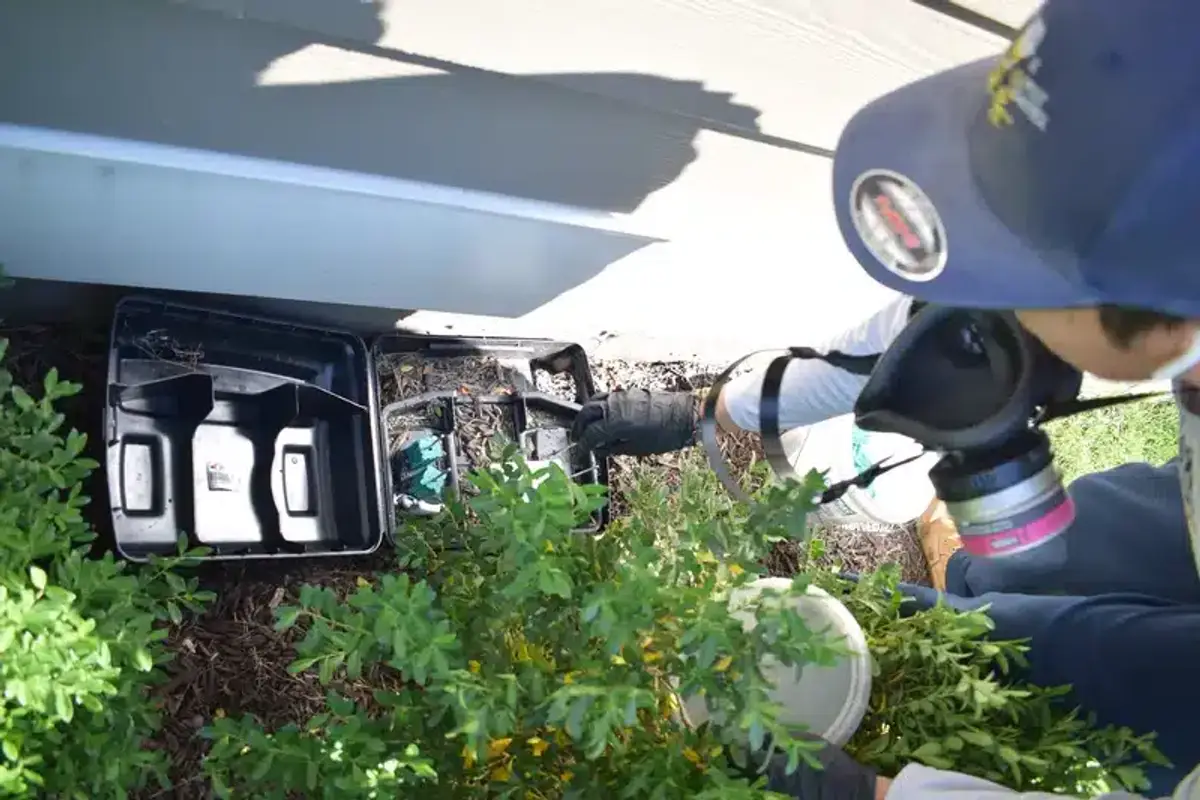
Timing and Reapplication
Most repellents lose effectiveness within 7-14 days, especially natural methods. Set calendar reminders to reapply treatments consistently. Weather conditions like rain and humidity accelerate the breakdown of aromatic compounds.
For best results, apply repellents in the evening when rats are most active. This ensures fresh scent coverage during peak activity hours.
Essential Repellent Application Steps
- Target Active Areas: Focus on confirmed rat activity zones with fresh droppings or gnaw marks
- Create Continuous Barriers: Apply repellents in unbroken lines rather than random spots for maximum effectiveness
- Weather Timing: Apply during dry conditions to prevent rain from washing away treatments immediately
- Reapplication Schedule: Mark calendar dates for consistent reapplication every 5-7 days for natural repellents
Limitations of Repellents Alone
When Repellents Fall Short
Repellents work best for minor mouse or rat problems and prevention. If you’re already dealing with a rat infestation involving multiple animals, repellents alone typically won’t solve the issue completely.
In my experience working in Old Town Alexandria, homeowners often become frustrated when repellents don’t immediately eliminate established rat populations. The reality is that once rats have established territories and food sources, they’re more likely to tolerate unpleasant odors.
Habituation Concerns
Rats are intelligent animals that adapt to their environment. Continuous exposure to the same repellent scents can lead to habituation, where the rats simply ignore the deterrent over time.
To combat this, rotate between different types of repellents every few weeks. This prevents rats from becoming accustomed to any single deterrent method.
Environmental Factors
Weather, humidity, and air circulation all affect repellent performance. Basement areas with poor ventilation may retain scents longer, while outdoor applications face challenges from wind and precipitation.
Understanding these environmental factors helps set realistic expectations for repellent effectiveness in your specific situation.
Integrated Rat Control Strategies
Combining Repellents with Exclusion
The most effective approach combines repellents with exclusion work. Start by sealing entry points with steel wool or wire mesh, then apply repellents around the sealed areas to discourage future attempts at entry.
Focus on gaps larger than ¼ inch, which rats can squeeze through. Common entry points include areas around utility lines, foundation cracks, and gaps under doors.

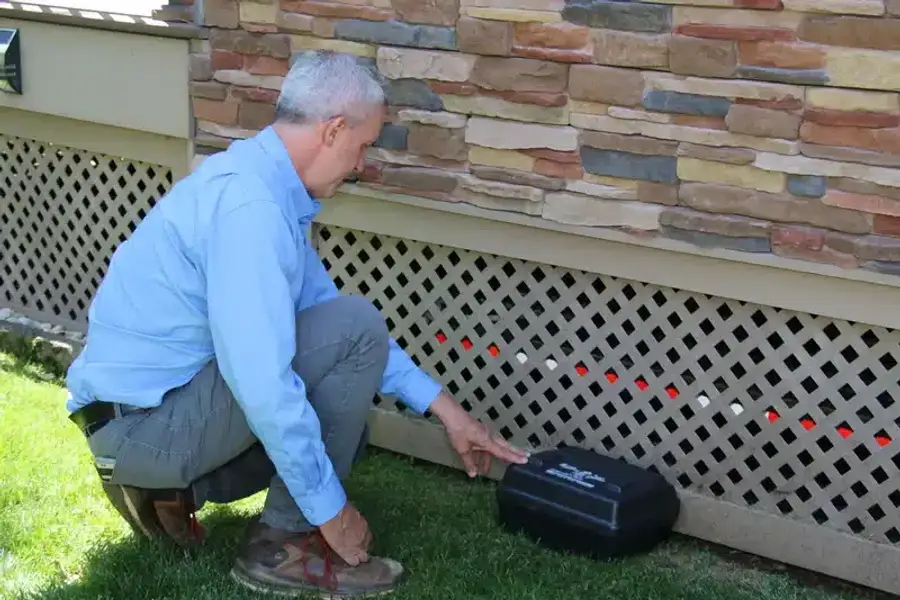
Pest Control Through Sanitation: Keep Rats Away
Remove food sources that attract rats to your property. Keep food in sealed containers, clean up pet food promptly, and secure garbage in tight-fitting lids. Without accessible food sources, repellents become much more effective.
Eliminate water sources like leaky pipes, pet water dishes, and standing water in containers. Rats need both food and water to survive, so controlling access to these necessities amplifies your repellent efforts.
Professional Pest Control for Rodent Management
For ongoing rat population control, consider professional pest control services that can monitor activity levels and adjust strategies as needed. Our four-step rodent protocol combines inspection, targeted baiting, follow-up monitoring, and long-term maintenance.
Professional monitoring helps identify when repellent strategies are working and when additional interventions may be necessary. This prevents minor issues from becoming major infestations.
Safety Considerations for Repellent Use
Protecting Your Family and Pets
Most natural repellents pose minimal risks, but some cautions apply. Peppermint oil can cause skin irritation in sensitive individuals. Keep concentrated essential oils away from small children and pets who might ingest them.
When using commercial repellents, read labels carefully and follow application guidelines. Products containing capsaicin can cause eye and skin irritation if handled improperly.
Important Safety Precautions for Repellent Use
Never use mothballs as rat repellents - despite popular belief, they pose serious health risks to humans and pets. The EPA prohibits their use for pest control, and concentrated naphthalene can cause respiratory problems and organ damage.
Always choose EPA-approved repellent products and follow label directions exactly to protect your family’s health.
Pet-Friendly Application Methods
Dogs and cats may be sensitive to strong odors used in repellents. Apply treatments when pets are away from the area and allow adequate ventilation time before allowing pet access.
Cotton balls soaked in repellents should be placed in areas where pets cannot reach them. Consider using enclosed bait stations designed for repellent applications in homes with curious pets.
Proper Storage and Handling
Store repellent products in original containers, away from heat and direct sunlight. Many essential oils are flammable and require proper storage precautions.
Always wash hands thoroughly after applying repellents, especially before handling food or touching your face. Use gloves when applying concentrated products to avoid skin contact.
Cost-Effective Repellent Solutions
DIY vs. Commercial Options
Homemade repellents using peppermint oil cost significantly less than commercial products. A bottle of peppermint oil can create dozens of applications when properly diluted with water and spray around problem areas.
Commercial products often provide longer-lasting effects and may include additional active ingredients. Compare the cost per application when evaluating different options.
Long-Term Value Considerations
While repellents require ongoing reapplication costs, they’re typically much less expensive than professional pest control or property damage repairs. Factor in the time investment for regular reapplication when calculating true costs.
The most cost-effective approach often combines inexpensive natural methods with targeted use of commercial products in high-priority areas.
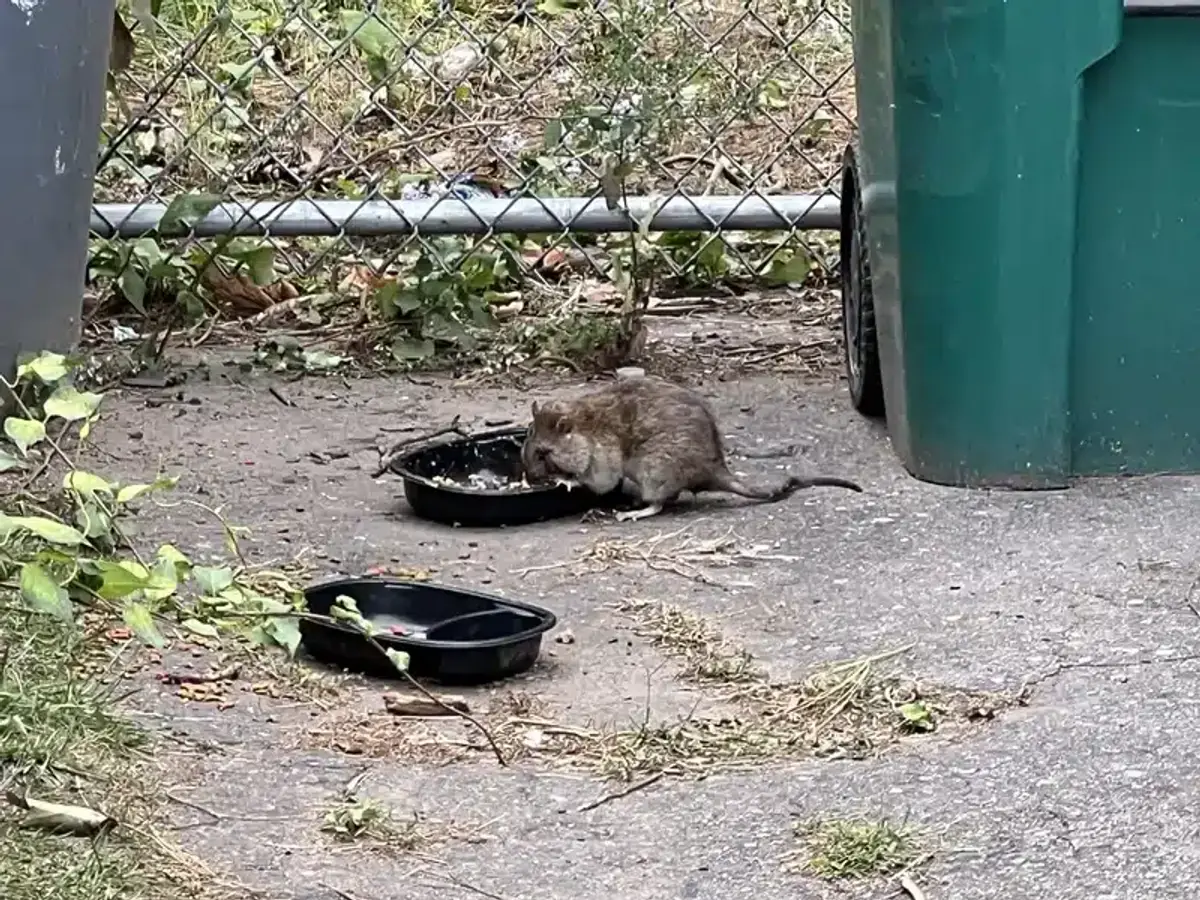
Customer Reviews and Real-World Results
What Homeowners Are Saying
Customer reviews of repellent products show mixed results, with natural repellents receiving praise for being humane and chemical-free. However, many reviews note the need for frequent reapplication and variable effectiveness.
Products designed for outdoor use generally receive better ratings than indoor applications, likely because outdoor areas allow for broader coverage and natural ventilation that maintains scent intensity.
Professional Experience with Repellents
In my pest control practice, I’ve found that repellents work best as prevention tools rather than solutions for existing infestations. Clients who use repellents as part of comprehensive rat deterrent strategies report better long-term success.
The most satisfied customers combine repellent use with proper food storage, regular cleaning, and professional monitoring. This integrated approach addresses both immediate deterrence and long-term prevention.
When dealing with persistent rat problems, professional pest control remains the most reliable solution. Our experience with hundreds of homes in the DC metro area has shown that lower-level baiting strategies typically outperform attic treatments that some competitors recommend.
If you’re struggling with rats despite using repellents, don’t wait for the problem to worsen. Contact Better Termite & Pest Control at 703-683-2000 or email us at info@bettertermite.com for a thorough inspection and customized treatment plan. Our licensed technicians can help you develop an integrated strategy that keeps your home rat-free for the long term.
Frequently Asked Questions
What is the best repellent for rats?
+
The most effective rat repellent combines multiple approaches rather than relying on a single product. Peppermint oil shows strong initial results, while predator urine can create lasting avoidance behaviors. For best results, rotate between different repellent types and combine them with exclusion work like sealing entry points.
What smells do rats hate the most?
+
Rats hate strong, pungent odors including peppermint, eucalyptus, citronella, and predator scents like coyote urine. Ammonia-based odors and capsaicin also create aversion responses. However, rats can become accustomed to consistent scents over time, so rotating different odors increases effectiveness.
What is the best thing to keep rats away?
+
The best rat prevention strategy combines repellents with sanitation and exclusion. Remove food sources, seal entry points larger than ¼ inch, eliminate water sources, and apply repellents around potential access areas. This integrated approach works better than any single method alone.
What is the fastest way to get rid of rats and mice?
+
For rapid results, combine professional baiting with immediate exclusion work and repellent barriers. While repellents alone won't eliminate established populations quickly, they can help prevent new rats from entering while other control methods take effect. Professional pest control typically provides the fastest, most thorough results.
How often do I need to reapply natural rat repellents?
+
Natural repellents like peppermint oil need reapplication every 3-7 days, especially in humid conditions or areas with good air circulation. Predator urine lasts 7-10 days before losing effectiveness. Set regular reminders to maintain consistent coverage for your home.
With five years of hands-on experience in the pest control industry, George Schulz is a registered technician with the Virginia Pest Management Association and a proud third-generation professional in a family business that's been protecting homes for over 57 years. He manages and trains a team of service pros while also leading internal research efforts—recently spearheading a deep-dive review of thousands of documents on pest control materials to hand-pick the most kid and pet friendly, most effective solutions tailored specifically for homes in the DC metro area.
